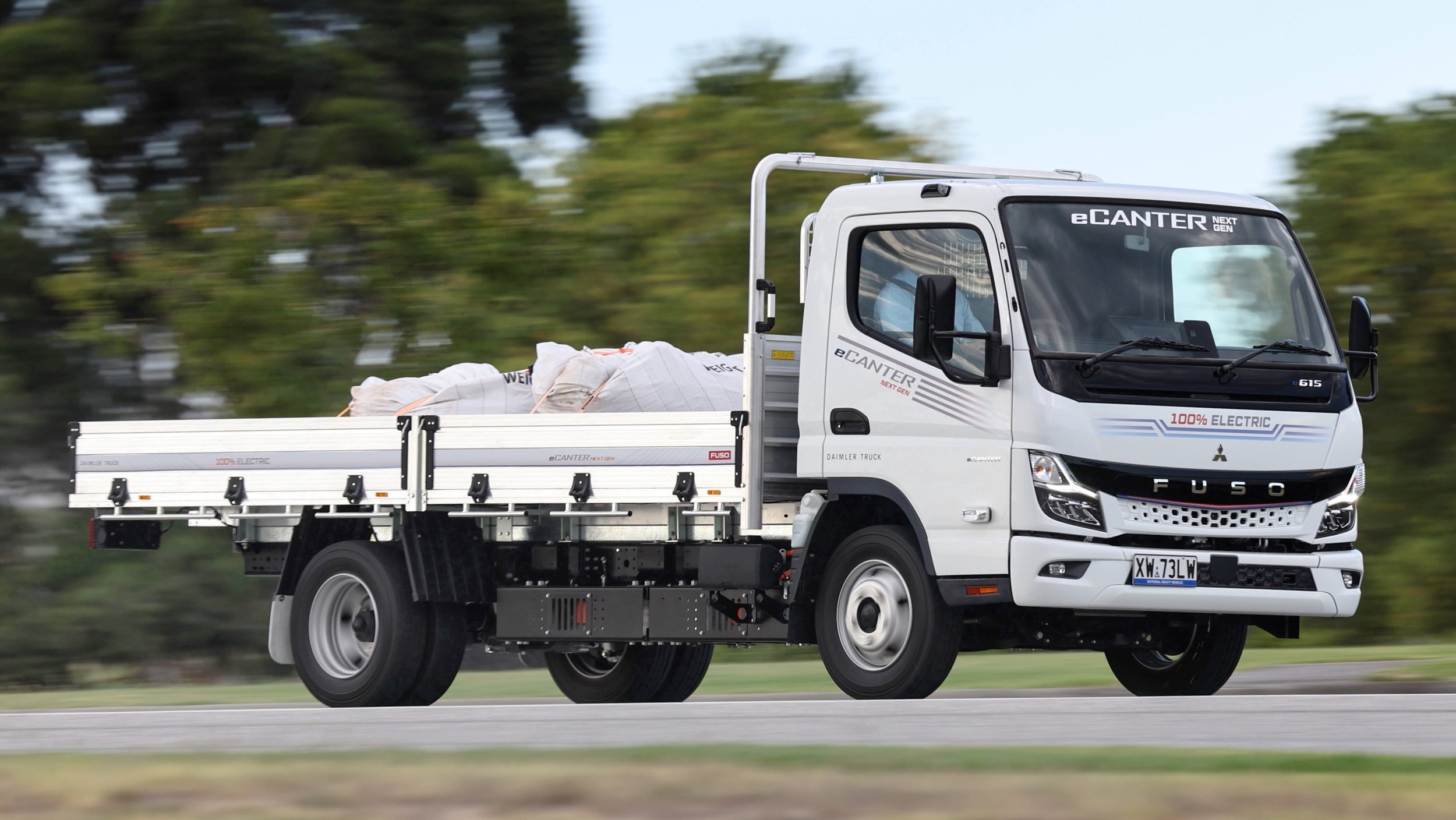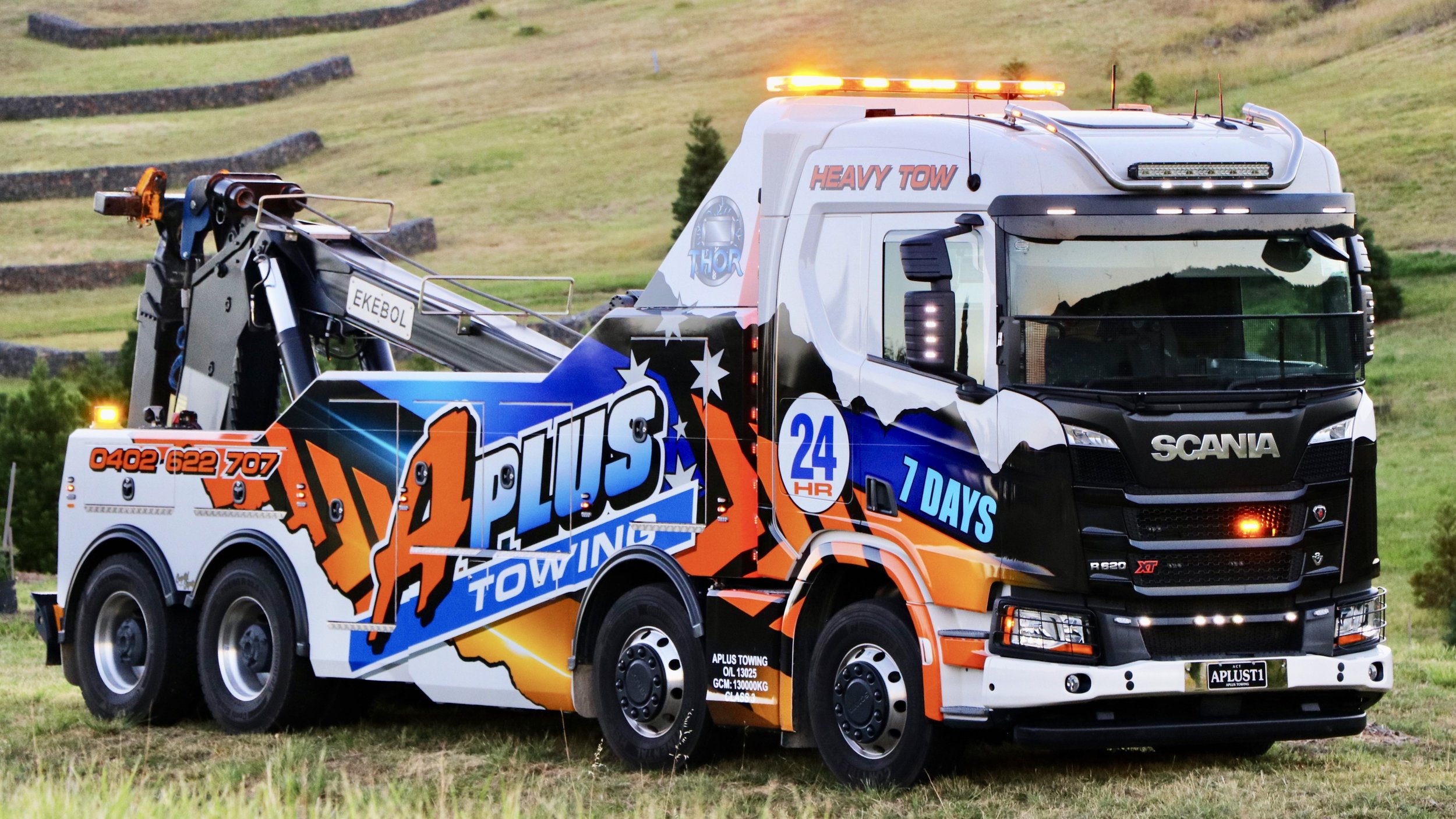“Still Fully Sick, Bro.” - 2nd Generation Fuso eCanter
Back in 2019 I test drove the, then brand new Fuso eCanter. So new in fact that the info screen was in Japanese. This was the first full electric truck I’d driven and to say I was blown away was an understatement. I entitled that article, eCanter - “Fully Sick, Bro.” Here is an extract from that article:
We hit the city and the consequent traffic lights. Beside me is a VT Holden V8 burbling away - P-plates, Doof-Doof and pimples on the driver’s cheeks. Lights change to green and Boy Racer is off! I can’t help myself. As he squeals off down the road I put my electric pedal to the metal in the 4 plus ton Pantech. In no time I’m beside, and then past him. Wow! Just, Wow! We pull up at the next set of lights and there I am with a grin from ear to ear and there’s Boy Racer looking across in astonishment. Hahaha.
My host, Romesh, the Senior Manager, Product Management and Engineering at Fuso, looks at me with a smile. “You like?”
“Fully sick, Bro,” I reply.
. . . . . . .
I’ve driven quite a few EV’s since 2019 but that first eCanter has always remained fondly in my memory – a first love sort of thing – and I’ve yet to drive anything in the segment that I’ve considered better in the intervening years.
Above: 1st Generation interior. Below: The 2nd Gen is a big leap forward in every respect.
Now I’m behind the wheel of the brand new, 2nd Generation eCanter and again I have Daimler’s Romesh Rodrigo riding shotgun.
From that 1st Edition, single model, Fuso has gone the whole hog with Gen2, offering no less than 14 variants: 4 weight ratings from 4.5t GVM to 8.5t GVM, 6 wheelbases, 3 battery configurations and a choice of City or Wide Cab. They have ePTO options available as well.
Those 1st edition trucks have now clocked over 8 million kilometres globally, so it’s safe to assume Fuso have learned a thing or two along the way. Certainly 14 variants point to high demand for this type of truck.
Topping the safety features list in my book is AVAS (Approaching Vehicle Alarm System) which creates artificial vehicle sounds when running forward at low speed and in reverse. If you get a fright when a person sneaks up behind you, imagine tons of truck doing the same!
There’s the latest tech versions of Advanced Brake Assist, Electronic Stability, Lane Departure Warning and Active Side Guard Assist. This last one now, not only warns if someone or something is down the left side of the truck, but will override the drive and stop the vehicle if it senses an imminent collision. To round things out there’s now LED head and tail lights.
With the odd Tesla and a very public EV truck going up in flames recently, it’s not surprising that Daimler have invested heavily in battery safety. Firstly there are the impact crash sensors that shut off the high voltage supply from the HV batteries to ensure no electric current is released.
There have been fire tests, batteries have been overcharged and drowned -everything to ensure these vehicles not only meet, but exceed European Community battery regulations.
The battery packs are set well within the side perimeter of the vehicle, not only for added safety but to allow added flexibility when adding body types to the chassis.
For those not in the know, the batteries in trucks (and cars) are actually a whole bunch of small batteries grouped together. In the Gen 1 – and many competitors today – cooling and/or warming was achieved by a single ‘blanket’ wrapped around the whole. In Gen 2 there are channels around each individual battery to minimise fire risk.
These latest battery packs are Lithium Ion Phosphate which not only have significantly less dependence on raw materials such as nickel, cobalt and magnesium, they have a lower fire risk compared to other types of technology. They are also expected to give longer life.
To illustrate the advances in battery technology, Gen 1 had 88kWh giving a range of 100Km. The same single battery is now only 41kWh in Gen 2, but still gives that 100 Km range. And now, depending on choice of vehicle you can have up to 3 batteries with a potential range of 300Km, depending upon how you drive it. If that doesn’t diminish range anxiety, I don’t know what will.
These new batteries also have up to 95% usable capacity, against around only 70% of the old Lithium Ion. Testing has shown that they retain maximum charge much longer. They also have a liquid conditioning system which is for cooling, and heating as sometimes you need to bring the battery up to optimised temperature.
The Gen 2 eCanter can now be charged on both AC and DC, so you can take one home and charge it in the shed – provided you have 3 Phase power available.
The other big news from Fuso is the world-beating eAxle where engine and diff are one unit, doing away with tailshaft and, in this iteration, gearbox. It is efficient packaging of space, saves a bit of weight, and Daimler/Fuso is waiting for the rest of the world to catch up. In the 2nd Gen eCanter one motor does the job of propelling the truck.
Fuso's eAxle is world-leading tech
So now you’ve all learnt a thing or two about battery and engine technology and hopefully feel confident in Daimler’s world-leading tech and testing, but what’s this 2nd Generation truck like to get in and to drive?
The first thing to hit you in the face are the air vents sitting proud at each end of the dash. With bright orange fins inserted, they look like a jet engine on afterburn. Orange is also used in the seat stitching and door pocket inserts to great effect. It looks thoroughly modern – almost futuristic. The large, fully digital instrument cluster is super easy to read, supplying all the necessary info on the usual, as well as remaining battery power and regeneration into the same.
It’s complimented with a large Australian sourced multimedia screen that sits proud on the dashboard. Left of the steering and protruding from the dash is the gearshift. Move it to the right and up or down for R, N and D. Let it go and the lever moves back to the left and becomes a 3 stage regeneration lever: B (for braking) 1, 2 and 3 – each stage increasing the amount of regeneration into the battery/s. You knock the lever forward to increase and in B3 it hauls the truck up big time!
My only small criticism is that it is a slight stretch to reach and push forward. I understand that it’s to allow the driver to walk across the cab to exit from the passenger side but perhaps Fuso could have incorporated some sort of foldout extender. I’m being super picky here. I did get used to it and drove around all day barely using the brakes.
In this Wide Cab version (with two batteries) the driver gets an Isri suspended seat as standard. The narrower City Cab (one battery) still gets an Isri minus the suspension. I drove both through the day and really, my bum-o-meter couldn’t tell the difference. Suffice to say they were both great.
This is where electric works - in the 'burbs
The truck is really well planted on the road and you can throw it around corners, due to low centre of gravity (battery/s), the independent, double wishbone front suspension and pin-point rack and pinion steering. It combines to give class leading ride and handling. We are 85% loaded and the truck feels super nimble.
When you think about the tonnage on the back of this truck, and in fact what the truck itself weighs, its acceleration is exhilarating, not in the usual sense of revving, changing gears and so forth, but rather in a beautifully linear progression and build-up of speed. It’s quick, and whilst this time around I couldn’t manage any traffic light escapades, I did a standing start against, as it happened, an identical Fuso Diesel – and left it in my wake. Oh, and the eCanter is quiet.
Of course it would be with no diesel thumping away. Unless you’ve driven a truck such as this you simply have no idea how that constant noise adds to your fatigue at day’s end. The difference is truly startling.
A traffic light changes to yellow. Not enough time to stop so I power through it. In an ICE truck it would have turned red and I’d have copped 3 points on my licence. Another light goes to yellow and this time I stamp on the brakes with no time to think of flicking the regen lever forward. The disc brakes work just fine on those occasions where you really need them.
I spend half a day in the Wide Cab and the other half in the City Cab and they are both brilliant. The air-con was on full blast all day as I wafted in and out of traffic, surged down motorways and forgot all about looking at how much charge was left. At the end there was plenty. I’ve done what any last-mile delivery driver would do, the difference being that I didn’t feel at all taxed in body or mind.
These trucks are premium in every sense of the word - not bad for a delivery vehicle. Electric? Don’t knock it until you’ve tried it.
More Blog Posts You Will Love
More From In-depth
Got something to say? Say it here!
truckinwithkermie.com is for YOU and about YOU. We’d love to hear your stories. There are a number of ways to get in touch with us:
kermie@truckinwithkermie.com
(+61) 0418 139 415





















